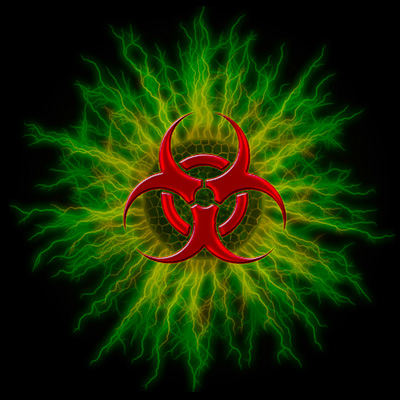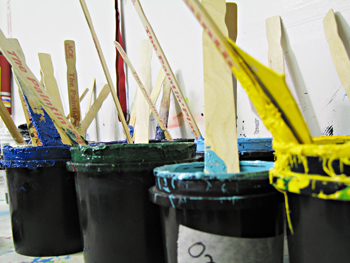Pollutants and chemicals in the home and in our immediate environment are turning out to be more dangerous to our health than was ever realized. And what has that got to do with screen printing?
To quote Ronald Fuchs and Michael McCann, Ph.D., C.I.H.
“Silk screen printing is one of the most hazardous processes in the arts and crafts. Dermatitis, narcosis (dizziness, light-headedness, fatigue, nausea, lack of coordination and headaches), eye irritation, adverse reproductive hazards including increased risk of miscarriage, and serious neurological problems can all result from the processes of screen printing. Traditionally, silk screen printing has been performed using organic solvent-based materials. Water-based inks containing less hazardous ingredients provide a safer and increasingly popular alternative.”
Read the full article here:
http://www.uic.edu/sph/glakes/harts1/HARTS_library/silkscrn.txt
We didn't want to use plastisol inks because I just didn’t like them. I find the heavy plastic on a shirt uncomfortable and unappealing. But it turns out there’s more to be concerned about. A major health concern about plastisol inks is not only that they are PVC-based but that they contain phthalates. There’s been a lot in the news in recent years about phthalates and quite a bit of research into possible problems. Medical research has linked high doses of phthalates to damage to the liver, kidneys, lungs and testes in rats. Another medical study suggest that phthalates contributes to allergies in children. Many people, like me, choose not to wear plastisol screened clothing which comes into close, extended contact with your porous skin.
What many screen printers don’t realize is that there are better alternatives to doing things the old-fashioned toxic way.
Ways to do Greener screen printing
- Use an inkjet printer for your transparencies. Inkjet printers are greener than film output and are cheaper.
- Use water-based or discharge inks. Check into what is in them. You could even look into the new phthalate-free plastisol inks if plasitisol is what you want to use.
- Know what you are buying. Do the research. Have Material Safety Data Sheets for all of the products you buy and read them. Then use good judgement about what products you use.
- Use water-based screen printing adhesives, like Pro Bond or Tex Tac instead of solvent-based aerosols like Mist. These cost less, a LOT less as it turns out, and work better also. I switched while doing research into how to make our business greener.
- Use eco-friendly cleaners. The ones we use work better than their toxic counterparts.
- Buy shirts with recycled content or at least organic cotton. We are loving Anvil's new recycled cotton blend shirts we've been testing out.
- Put a simple filter, even one just made with a pieces of screen or cloth on the drain of your washout booth or slop sink. This will help stuff like emulsion from clogging your drains as well as protecting the water system.
- Think about ways to recycle and also ways to reuse old stuff. I wrote up a bit of what we have done here on the Deaths Head blog.
- Be careful, plan ahead and make fewer mistakes. Fewer mistakes reduces waste and saves you money. It can be done.
Extra Reading:
Here’s a very good article on the subject by the author of one of the best books out there on the subject, Water-Based Screen Printing Today
http://www.nontoxicprint.com/screenprintingbasics.htm
Next: 10 Things Never to do While Screen Printing Water-based inks and Discharge inks


No comments:
Post a Comment
Note: Only a member of this blog may post a comment.